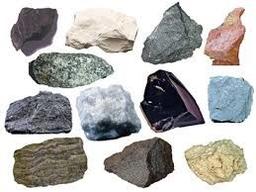
Rock Cycle
Quiz by Traci Deal
Feel free to use or edit a copy
includes Teacher and Student dashboards
Measure skillsfrom any curriculum
Measure skills
from any curriculum
Tag the questions with any skills you have. Your dashboard will track each student's mastery of each skill.
With a free account, teachers can
- edit the questions
- save a copy for later
- start a class game
- automatically assign follow-up activities based on students’ scores
- assign as homework
- share a link with colleagues
- print as a bubble sheet
20 questions
Show answers
- Q1The rock cycle suggests that __________.rocks disappear from Earth as they go undergroundrocks are continually recycled into different formsrocks always stay in the same formrocks are always being added to Earth's mass30s
- Q2What forms if an igneous rock melts?intrusive rockssedimentary rockmagmametamorphic rock30s
- Q3Compaction and cementation create _________ rock from particles of rock, soil, and sand.weatheringigneousmetamorphicsedimentary30s
- Q4Which of the following characteristics of a rock is affected by the cooling rate of magma?the rock's texturethe rock's hardnessthe rock's colorthe rock's chemical composition30s
- Q5Which of the following processes are a component of the rock cycle?all of thesecompactioncooling and crystallizationerosion and weathering30s
- Q6Granitic igneous rocks are light in color and contain large amounts of:carbon and nickeliron and magnesiumsilica and oxygencopper and tin30s
- Q7Which type of rock often contains fossils?igneoussedimentaryall rock typesmetamorphic30s
- Q8What are rocks that have changed due to temperature and pressure called?metamorphic rockssedimentary rockslava rocksigneous rocks30s
- Q9Using the rock cycle diagram, how do igneous and metamorphic rocks become sedimentary rocks?heat and pressureerosionmeltingvolcanic activity30s
- Q10What process or processes does Roman numeral V represent in the following diagram?meltingheat and pressureweathering & erosionvolcanic eruption30s
- Q11In order for a sedimentary rock to form _______ is needed.heat and pressuremeltingheatcompaction30s
- Q12What are Igneous Rocks that form as magma cools underground calledsurface rocksin ground rocksextrusive rocksintrusive rocks30s
- Q13Is lava above or below groundbelowaboveabove and belowneither location30s
- Q14When rocks are broken and moved by things such as water, this is called...MetamorphosisCompactionErosionWind30s
- Q15This rock cooled on the outside of a volcano and contained air bubbles when it was forming. What type of rock is this?igneoussedimentarymetamorphic30s